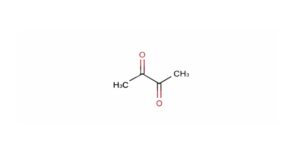Acetaldehyde, also known as acetaldehyde, belongs to aldehydes and is an organic compound with the molecular formula CH3CHO or MeCHO. Acetaldehyde is considered to be one of the most important compounds among aldehydes due to its widespread occurrence in nature and large-scale industrial production. Acetaldehyde can be found in coffee, bread, ripe fruit, and it can also be produced as a metabolite by plants. The oxidation of ethanol to acetaldehyde is believed to be the cause of hangovers.
Main Use
The largest user of acetaldehyde is the acetic acid industry. Butanol and octanol were also important derivatives of acetaldehyde in the past, but now they are basically replaced by propylene carbonyl synthesis. Other areas of consumption of acetaldehyde are the production of pentaerythritol, peracetic acid, pyridine and their derivatives. Domestically produced acetaldehyde is basically used as an intermediate in the production of acetic acid, and only a small amount is used to produce pentaerythritol, butanol, chloral, trimethylolpropane and other products. Acetaldehyde can be used to produce acetal, crotonaldehyde, peracetic acid, hydroxypropionitrile, chloral, ethyl acetate, pentaerythritol, acetic anhydride, acetic acid, glyoxal, phenylacrolein, acetal, methylethylamine , diethylamine, α-alanine, pyridine, α-picoline, β-picoline, γ-picoline.
In addition, acetaldehyde is also used to prepare important chemical raw materials such as acetic acid, acetic anhydride, butyraldehyde, octanol, pentaerythritol, and paraldehyde; it is used as a reducing agent and a fungicide.
Precaution
Health Hazard
Routes of entry: inhalation, ingestion
Health Hazard: Acute poisoning at low concentrations can cause eye, nose and upper respiratory tract irritation and bronchitis. Inhalation of high concentrations still has an anesthetic effect. Manifestations include headache, lethargy, confusion, bronchitis, pulmonary edema, diarrhea, proteinuria, liver and myocardial fatty degeneration. Can be fatal. Gastrointestinal irritation, anesthesia, and heart, liver, and kidney damage may occur if swallowed by mistake. May be sensitizing to the skin. Repeated exposure to steam can cause dermatitis and conjunctivitis. Chronic intoxication is similar to alcoholism. Manifestations include weight loss, anemia, delirium, audiovisual hallucinations, intellectual loss, and mental disorders.
First-aid
Skin Contact: Remove contaminated clothing, wash skin thoroughly with soap and water. Get medical attention if you feel unwell.
Eye contact: Lift the eyelids and rinse with running water or normal saline. Get medical attention if you feel unwell.
Inhalation: Quickly leave the scene to fresh air. Keep airway open. If breathing is difficult, give oxygen. Breathing, cardiac arrest, immediate CPR. Seek medical attention.
Ingestion: drink water, do not induce vomiting. Get medical attention if you feel unwell.


